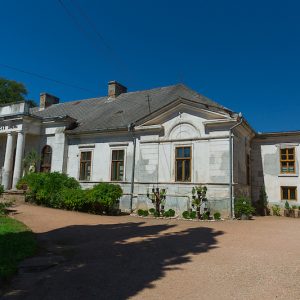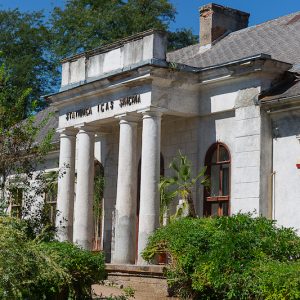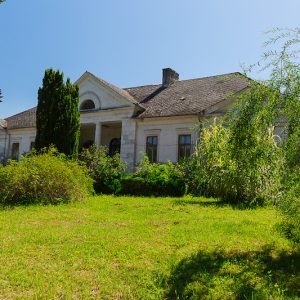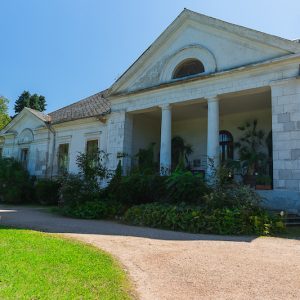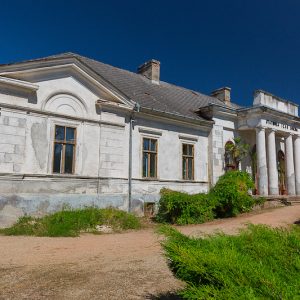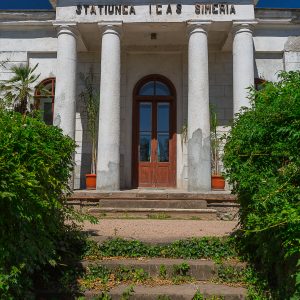- National Monument Number:
- HD-II-a-B-03448
- Address:
- Simeria, Biscaria street nr. 1
- Dated to:
- Ownership:
- public property
A roofed archway extends behind these pillars. The facade facing the main road was also constructing in a classicist style, with the main entrance situated behind two pairs of columns with Tuscan capitals. Both facades feature three round-arched windows at their central sections. The rest of the windows are jack arched, with straight eyebrow lintels above them.
A 67 hectare land belongs to the castle: this is what makes it truly significant. The park was established by Earl Gyulay Ferenc V during the second half of the 18th century. It is first mentioned in writing in 1763, when exotic plants were brought here. The estate changed hands during the 1800’s, and went over to the Earl Kuún family from Ozsdola. Two decades later, the castle and the park suffered significant damage at the hands of the Romanian rebels, and these were rectified only partially by the 1870’s – 1880’s. Plants from the Far East and from North America were planted in the park during that time. After Kuún family, the estate became the property of Fáy Béla of Fáj, who was a correspondent of the Hungarian Scientific Academy, and started administering the arboretum for scientific purposes. He had no children, and so he named the children of his brother-in-law, Máriássy Andor, as his inheritors. Ocskay István then married Máriássy Klementina, and the Ocskay family built a greenhouse on the estate as well. The Ocskay family were the last owners of the castle before it was nationalised.
After its nationalisation, the park started falling into decay, and it was pronounced as an experimental forestry-field in 1952, before it was taken over by the Forestry Research Institution in 1954, and transformed into a dendrological reservation. Today, the castle belongs to the National Sylviculture Directory, while the arboretum belongs to the Romanian Scientific Academy.





